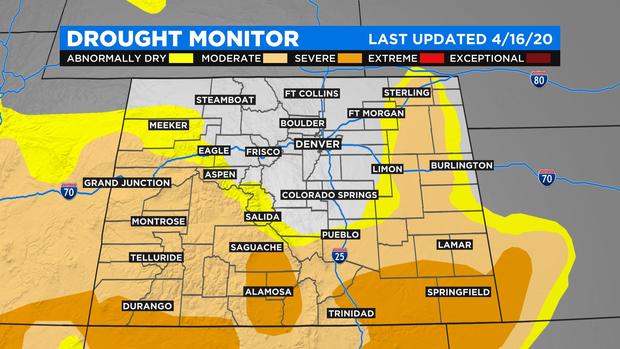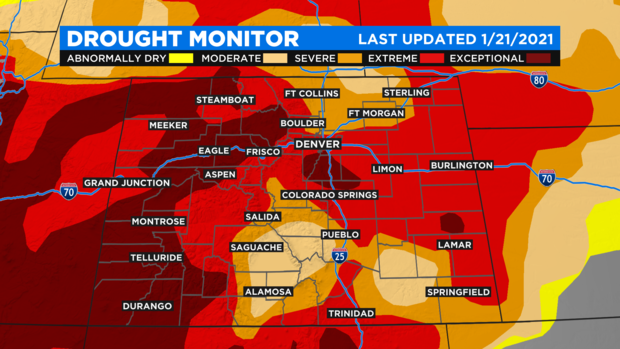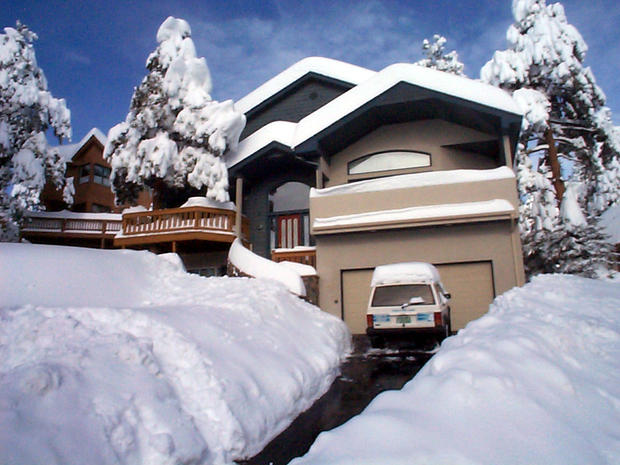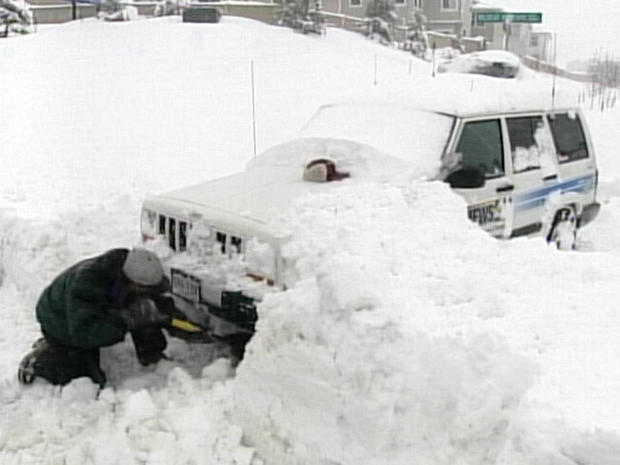Last Time Drought Was This Bad, March '03 Blizzard Rescued Colorado
DENVER (CBS4) - Colorado is facing a very uncertain spring and summer when it comes to water thanks to a widespread drought that developed last year. According to NOAA's National Center for Environmental Information 2020 was the second driest year on record in the state since 1895. The driest year in Colorado's recorded weather history was 2002.

Drought is a frequent visitor to Colorado and is often found in some part of the state. Our large size, complex topography and great distance from oceans make this a climate reality. We depend on the jet stream to bring a consistent storm track to the state to meet our water needs. If that isn't happening then drought develops.
Many times we'll see a few dry months where drought develops, but it is often in just a portion of the state, or it will be followed by a wet period that either resolves things or at least keeps the drought from getting worse. But in recent history we find ourselves getting into longer periods of dryness where drought becomes widespread and reaches extreme to exceptional levels. The years 2002, 2012 and 2013 come to mind, in addition to other shorter bouts of widespread drought in years such as 2006, 2018 and 2019.
The following two maps shows how drought in Colorado expanded in both coverage and intensity between April 2020 and January 2021.
It hasn't been this dry in Colorado since the record drought year of 2002, which was abruptly ended when a historic blizzard slammed the region in March 2003. The storm was one of the worst since state weather records started in 1872.
The multi-day storm dropped up to 3 feet of snow around metro Denver with more than 7 feet in the adjacent foothills. Strong northerly winds produced drifts in Denver up to 6 feet tall. Widespread damage was reported to trees, roofs and powerlines because the snow was so heavy and wet.
It's hard to know what this year will bring but it is clear we need something to change with the current weather pattern to ensure we do not fall into a more dire situation when it comes to water storage and supply. In the short term the outlook isn't the best since the planet is currently in a La Niña weather pattern, which is an abnormal cooling of the sea surface waters in the eastern part of the Pacific Ocean along the equator.
RELATED: Colorado Statewide Drought Has Denver Water Officials Worried
While this is extremely far away from Colorado there are teleconnections between what is happening in the oceans and what we experience in atmospheric behavior. For Colorado La Niña often means we enter an extended dry period, especially during the winter, as the main storm track stays too far north of the state to have much benefit.








